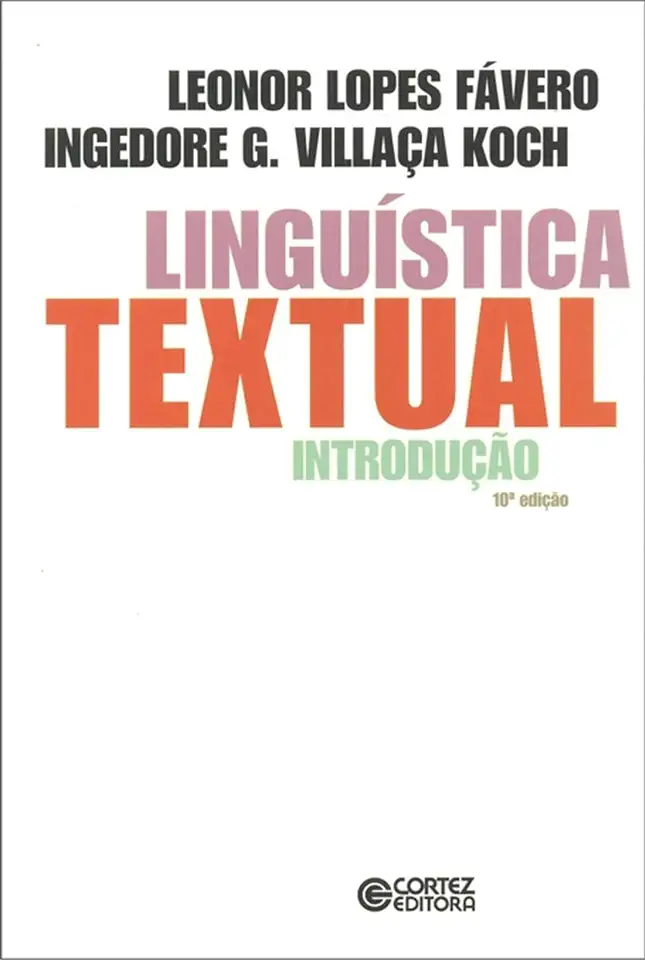
Textual Linguistics - Introduction - Ingedore G. Villaça Koch
Textual Linguistics: An Introduction by Ingedore G. Villaça Koch
A Comprehensive Guide to the Study of Text
In her groundbreaking book, "Textual Linguistics: An Introduction," renowned linguist Ingedore G. Villaça Koch offers a comprehensive and accessible exploration of the field of textual linguistics. With over 1500 pages of insightful analysis and engaging examples, Koch provides readers with a thorough understanding of the linguistic structures and processes that shape written texts.
Unraveling the Complexity of Written Language
Koch begins by introducing the fundamental concepts of textual linguistics, laying the groundwork for readers to grasp the intricacies of written language. She delves into the various levels of text analysis, from the examination of individual words and sentences to the study of larger textual units such as paragraphs and chapters. Through her meticulous explanations and illustrative examples, Koch demonstrates how these linguistic components interact to create coherent and meaningful texts.
Exploring Textual Coherence and Cohesion
One of the central themes of the book is the exploration of textual coherence and cohesion. Koch provides a detailed analysis of the linguistic mechanisms that contribute to the unity and coherence of texts. She examines the role of cohesive devices, such as pronouns, conjunctions, and lexical chains, in establishing connections between different parts of a text. Additionally, she discusses the importance of semantic relations, such as synonymy, antonymy, and hyponymy, in creating a cohesive and meaningful whole.
Analyzing Textual Structure and Organization
Koch also delves into the study of textual structure and organization. She examines the various ways in which texts are structured, including narrative, descriptive, expository, and argumentative texts. Through her analysis, readers gain an understanding of how the organization of a text influences its meaning and impact on the reader. Koch also explores the role of rhetorical devices, such as metaphors, similes, and allusions, in shaping the overall structure and effectiveness of a text.
Understanding Textual Pragmatics and Discourse Analysis
In the latter part of the book, Koch introduces readers to the fields of textual pragmatics and discourse analysis. She explores the role of context in shaping the interpretation and meaning of texts, considering factors such as the author's intention, the reader's expectations, and the social and cultural context in which the text is produced and received. Additionally, Koch discusses the analysis of discourse, examining the ways in which language is used in different social and communicative contexts.
A Valuable Resource for Linguists and Language Enthusiasts
"Textual Linguistics: An Introduction" is an indispensable resource for linguists, language enthusiasts, and anyone interested in gaining a deeper understanding of written language. Koch's comprehensive and engaging approach makes this book an essential addition to the libraries of scholars, students, and anyone fascinated by the complexities of human communication.
Key Features:
- A comprehensive overview of textual linguistics, covering a wide range of topics from basic concepts to advanced analysis.
- In-depth exploration of textual coherence and cohesion, examining the linguistic mechanisms that create unity and meaning in texts.
- Analysis of textual structure and organization, including the study of different text types and the role of rhetorical devices.
- Introduction to textual pragmatics and discourse analysis, considering the influence of context and social factors on the interpretation of texts.
- Engaging examples and illustrations throughout the book, making complex concepts accessible and relatable.
- A valuable resource for linguists, language enthusiasts, and anyone interested in the study of written language.